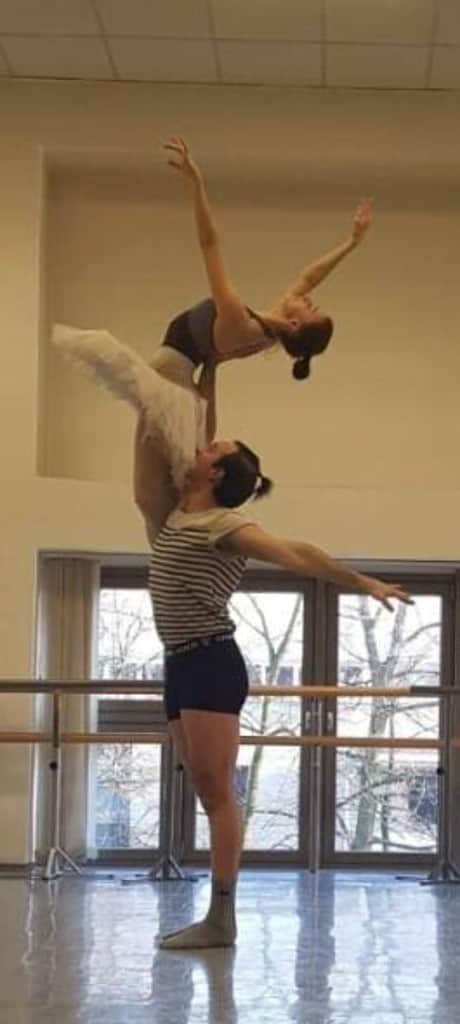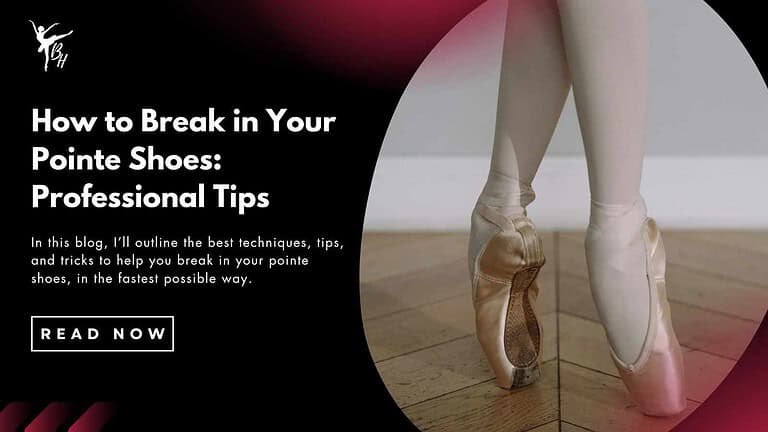How to Wear Ballet Tights
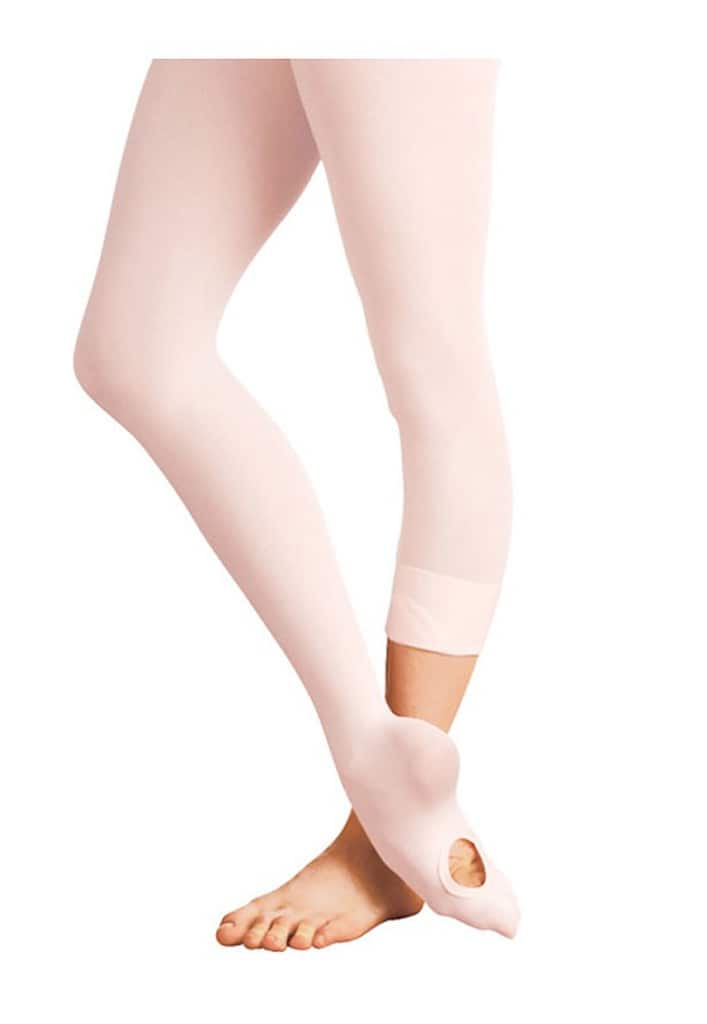
Ballet tights are just part of the ballet uniform right?
Having been a professional dancer for many years, I never really questioned why dancers wear tights.
But, then I realised that ballet tights serve many purposes, both practically and aesthetically.
In this blog post, I’ll teach you how to wear ballet tights, including how to choose the right size, style, colour, and material.
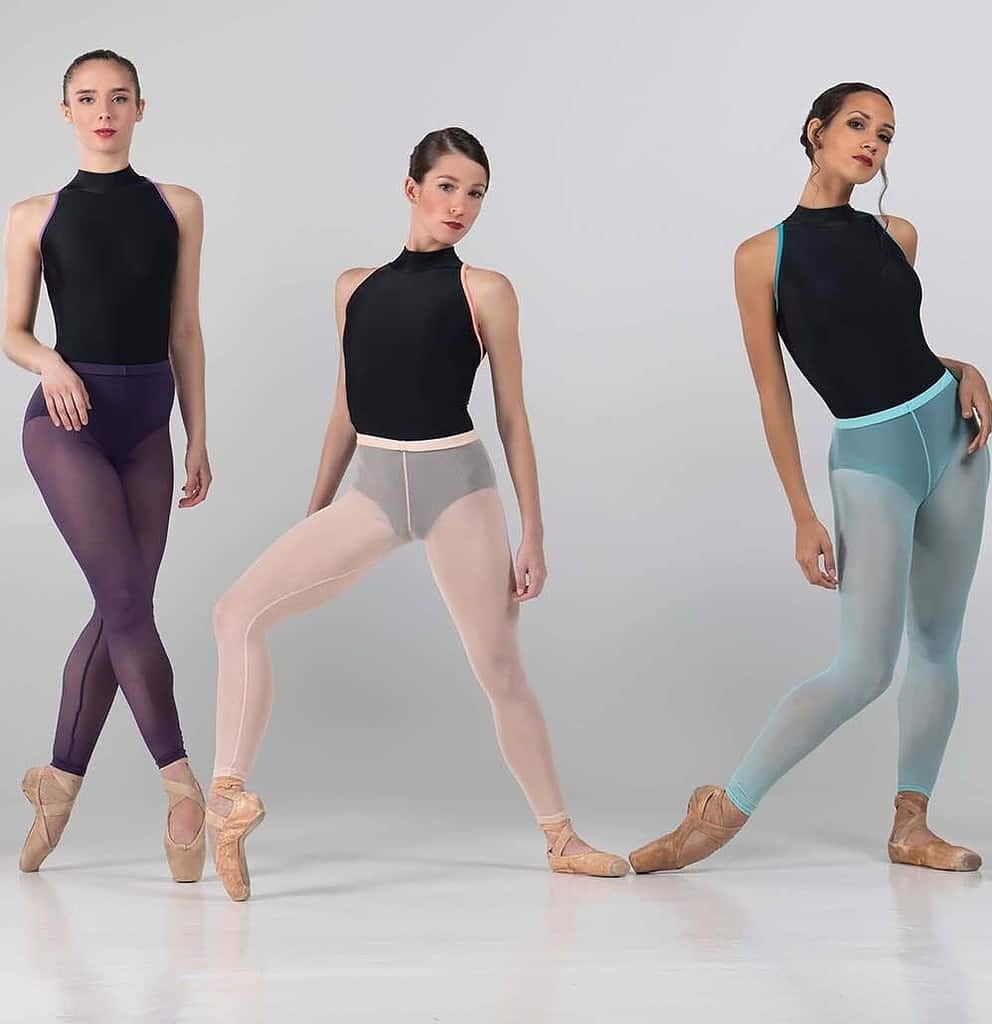
WHAT ARE BALLET TIGHTS?
Ballet tights are tight-fitting leg coverings that keep the leg muscles warm, help absorb sweat, prevent chafing (trust me, nobody wants that!), and create a smooth and elegant leg line.
They are indeed a functional and aesthetic necessity for dancers.
SELECTING THE PERFECT BALLET TIGHTS
The truth is, you’ll spend most of your ballet life dancing in tights, so taking the time to choose the perfect pair is important.
Below is an easy guide that will help you select your ideal pair of ballet tights.
CHOOSE THE RIGHT SIZE
When it comes to tights, it’s not always a perfect one-size-fits-all situation.
Sizes may vary slightly or greatly between different brands.
As a result, I strongly recommend referring to the provided size charts for the most accurate and comfortable fit.
REFER TO THE SIZE CHART
First things first, measure your waist, hips, and inseam.
Then, refer to the size chart.
Typically, tights are available in single sizes (ie. S, M, L), but certain brands do provide a dual-size option (ie. S/M).
Generally speaking, if your height and weight fall within the middle of the size chart, you can be confident that the size will fit well.
If however, you find yourself on the outer range, I would consider opting for the next size up.
Once you know your ideal size in a specific brand, the process is fairly straightforward from here.
Also don’t be afraid to try a size up or size down, and see what feels comfortable.
CHOOSE THE RIGHT STYLE
Ballet tights range in many different styles, catering to various dance forms and individual dancer preferences.
That’s the great thing about tights, there is something for everyone.
The following is a consolidated list of commonly used styles.
CONVERTIBLE TIGHTS
Convertible tights have a small opening at the bottom that can be pulled down to cover the foot or rolled up to be footless.
This style is really popular and convenient (and my personal favourite).
FOOTED TIGHTS
Footed tights cover the entire foot, providing a seamless look from the leg to the toes.
FOOTLESS TIGHTS
Footless tights end at the ankle, leaving the foot uncovered. This style is great for dancing barefoot.
STIRRUP TIGHTS
Stirrup tights are similar to footed tights but with an opening under the arch of the foot, leaving the heel exposed.
BACKSEAM TIGHTS
Backseam ballet tights are elegant tights with a seam running along the back of the leg.
CHOOSE THE RIGHT MATERIAL
Similar to ballet leotards, ballet tights come in a variety of materials, or a combination of materials that work together to provide breathability, structure, and stretch to the ballet tights. The key materials include:
CHOOSE THE RIGHT COLOUR
Have you ever wondered why ballet tights come in so many different colours?

Traditionally in classical ballet, the colour of tights should match a dancer’s skin colour.
This creates a visually stunning and seamless appearance, accentuates the beauty of dancer’s leg muscles, and also ensures a sense of uniformity during performances on stage.
SALMON PINK
The most standard and traditional colour for ballet tights is salmon pink.
This particular colour was designed to match the colour of ballet shoes and pointe shoes, creating a graceful and elongated line from the leg to the foot.
BLACK
Black tights are more commonly worn for neo-classical or contemporary dance classes and performances. They offer a more modern aesthetic.
Dancers generally choose this colour to discreetly cover areas they prefer not to highlight, creating a sleeker and more streamlined appearance, while still allowing the legs to be seen.
SKIN COLOUR
Skin coloured tights also provide a more modern aesthetic and are frequently chosen for a contemporary or modern feel.
This colour supports a nude-like appearance and the illusion of bare legs.
TRY DIFFERENT BRANDS
Ballet tights come in various brands, each with its unique characteristics.
Most of the popular brands are renowned for their quality and are commonly used by ballet students and ballet professionals.
Three of the most notable brands include Chacott, So Danca, and Cappezio.
In the end, though, your choice of brand will come down to what’s most comfortable and flattering for you.
CHACOTT
Chacott offers an extensive range of tights, and though they’re generally more expensive, they’re known for their exceptional design and unparalleled comfort.
Manufactured in Japan, in European pink, Chacott tights stand out as one of the softest and most favoured brands of tights within the ballet world.
SO DANCA
Manufactured in China, So Danca creates soft, comfortable, and stretchy tights.
They’re known for providing excellent value for money, and feature a slightly thicker waistband, ensuring comfort around the waist.
CAPEZIO
Capezio continues to offer durable tights with a compression effect.
Manufactured in Taiwan and available in the classic ballet pink, Capezio tights are widely accessible and is considered a good value-for-money option.
MAINTAINING AND CLEANING YOUR BALLET TIGHTS
Why is it that your ballet tights gradually start to fade, turn grey, and have holes appear in them time and time again?
The only solution to slow down the inevitable is to dedicate a bit more time and effort washing your tights properly.
DEALING WITH AND PREVENTING RUNS AND TEARS
To prevent runs and tears in ballet tights, always follow proper care instructions.
In the event of a tear or run, a simple home remedy is to use clear nail polish (or even hairspray) and apply it to the torn area.
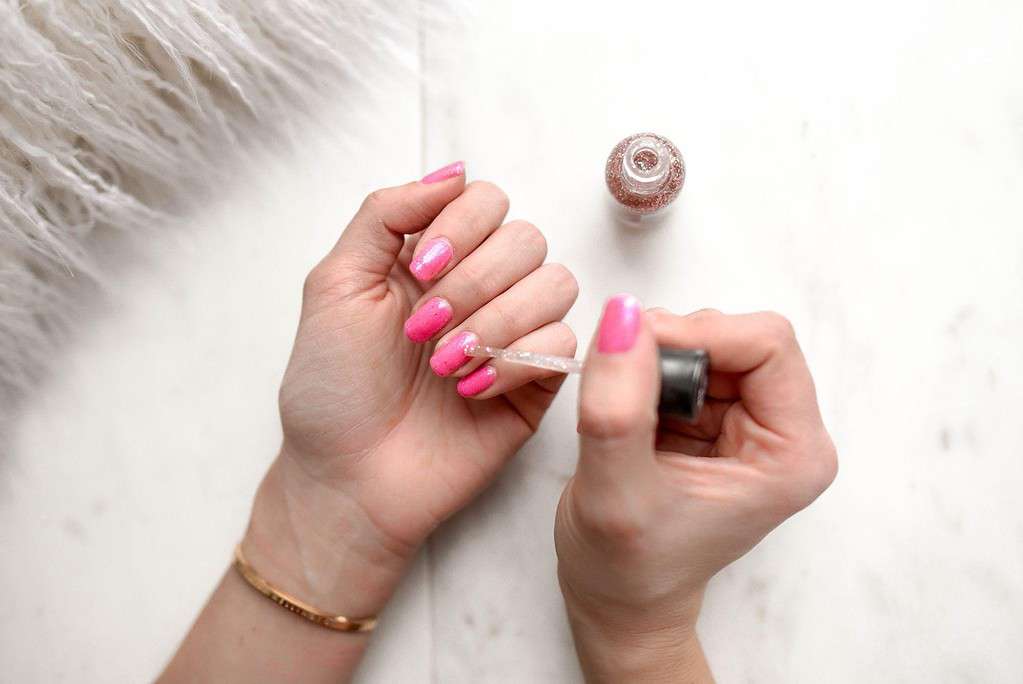
This will generally stop the ladder from continuing to spread, and give you a few extra wears.
HAND WASH VS MACHINE WASH
The decision between hand washing and machine washing your tights is a personal choice.
Hand washing takes more time but minimises the risk of snags.
If using a machine, opt for a gentle cycle, always with cold water, and consider using a mesh laundry bag for added protection.
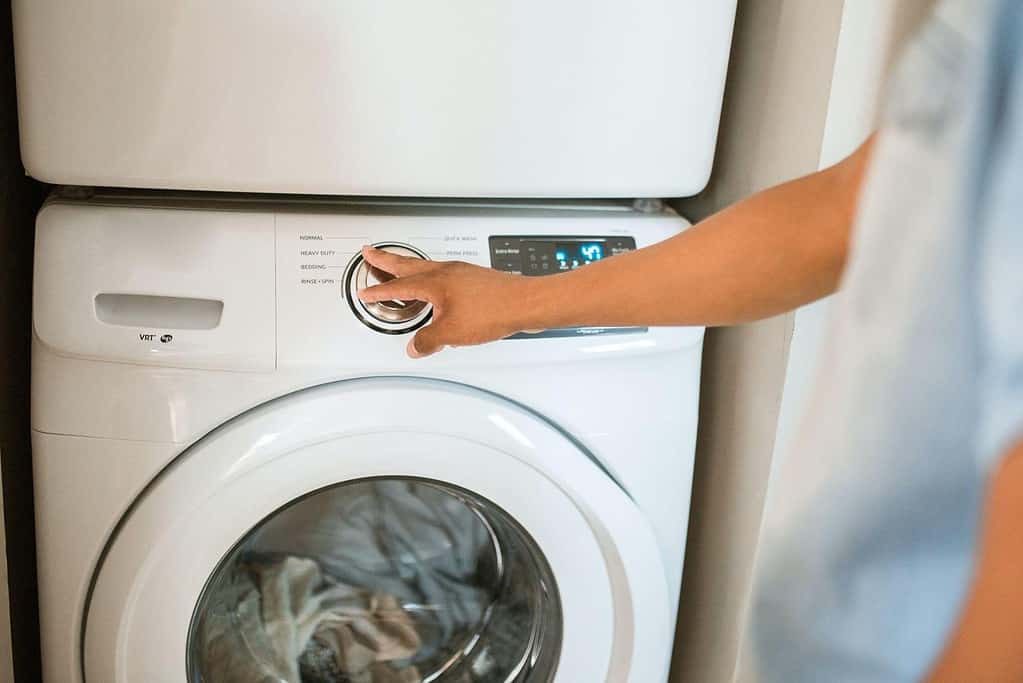
Just remember, never put your tights in the dryer, air drying is best!!!!
TOP 3 BALLET TIGHT TIPS
My three top tips are to rotate between tights, choose the right fabric to prevent saggy tights, and look to recycle old tights to set new fashion trends.
ROTATE BETWEEN TIGHTS
Just like with over stretching for dancers, tights too, can be overstretched.
I recommend rotating between 2 to 3 pairs of tights (rather than using the same pair day in and day out).
This will allow your tights to recover (yes, they need a rest too from all that dancing), preserve their stretchability and prevent the fibres from over-stretching due to continuous use.
NO MORE SAGGY TIGHTS
Have you ever found yourself constantly adjusting and pulling up your ballet tights during an entire class?
Usually, when this happens, there’s no turning back.
However, not all tight fabrics are created equal, and some fare better in maintaining their stretch and elasticity, even after repeated use.
So next time you go shopping, choose fabrics with compression, like microfibre, to prevent that constant sliding.
RECYCLE OLD HOLEY TIGHTS
Did you know that old tights can be repurposed and recycled to create new ballet fashion?
Instead of discarding your worn-out holey tights, pick up a pair of scissors and unleash your creativity.
Trust your instincts, and have a go at transforming them old ballet tights into new clothing items like:
BALLET TIGHTS FAQs
HOW DO I PUT ON BALLET TIGHTS?
To put on ballet tights, roll them down to the toes, insert your foot, and then pull them up smoothly, adjusting the waistband around your hips for a comfortable fit.
WHAT SHOULD I WEAR UNDER BALLET TIGHTS?
While some dancers opt for wearing nothing underneath tights, many choose to wear lightweight or streamlined underwear (ie. thong or G-string), in a neutral colour (tan or white) for added comfort and minimal visibility.
DO MALE DANCERS WEAR BALLET TIGHTS?
For male dancers, the term ‘ballet tights’ takes on a different meaning, where tights refer to the characteristics of leggings.
Designed to be slightly thicker while maintaining flexibility, male tights offer support and beautiful streamlined legs.
This specific design caters to the unique requirements of male dancers, enhancing both performance and aesthetics.
WHAT IS THE DIFFERENCE BETWEEN BALLET TIGHTS AND LEGGINGS?
Ballet tights are made from lightweight and stretchy materials, carefully designed to offer flexibility, and a snug fit, and accentuate a dancer’s leg line and movements.
In contrast, leggings are made from thicker materials.
Though suitable for dance training (not specifically ballet), leggings are better used as activewear for other fitness activities.
ARE BALLET TIGHTS SUPPOSED TO MATCH YOUR SKIN TONE?
In classical ballet, the standard colour for tights is often referred to as ‘salmon pink’ a hue similar to the natural skin tone.
The goal is to enhance the aesthetic and visual continuity of a dancer’s leg movements, from the leg down to the pointe shoe.
However, in various other styles, such as contemporary or modern dance, different colours have become more popular.
Dancers often choose black, tan, or even vibrant and expressive colours.
WHY DO BALLET TIGHTS HAVE HOLES IN THE FEET?
Dancers wear ballet tights that have holes in the feet (also known as convertible ballet tights) for various reasons. They provide convenience by enabling dancers to change shoes and add pointe shoe accessories without needing to change their tights.
Convertible tights also offer breathability during breaks, allowing dancers to air out their feet.
Ballet tights that have holes in the feet are also super convenient for dancers who prefer to dance barefoot. All you have to do is roll them up!
WRAP UP
If you’re a dancer, you will know the importance of having ballet tights that are supportive, breathable, comfortable, and durable.
Considering the amount of time you spend wearing ballet tights, finding that perfect pair and then looking after them, is important.
Every dancer wants tights that are aesthetically pleasing but also resilient enough to endure the rigours of dance.
Embrace variety by exploring different styles, materials, and colours, and use my guide to find the perfect pair that lets you dance freely.
